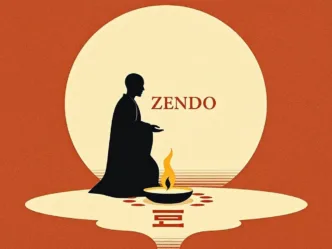Discover the ancient origins of the prefix ‘archaeo’ and how it shapes our understanding of history through words like archaeology and archaeometry.
Unearthing the Definition and Meaning of Archaeo: A Journey into Ancient Roots
Imagine standing amidst the crumbling stones of an ancient city, where every fragment tells a story of a world long gone. This is the domain of archaeo—a prefix that whisks us back to the dawn of human history. But what does “archaeo” mean, and how does it weave its way into our language and understanding of the past? In this article, we’ll explore its origins, break down its meaning, and dive into the fascinating words it inspires. Unlocking the secrets of ancient civilizations along the way.
The Meaning of “Archaeo”
At its core, it is a prefix derived from the Greek word archaios, which translates to “ancient” or “early.” It’s not a word you’d use on its own, but rather a linguistic key that unlocks the door to the distant past when combined with other terms. In English, it signals a connection to the study or exploration of antiquity, often through tangible remnants like bones, tools, or ruins.
Think of it as a time machine built into our vocabulary—a way to label and explore everything ancient. From forgotten cities to the seeds our ancestors planted.
Where Did “Archaeo” Come From?
The story of archaeo- begins in ancient Greece, a civilization obsessed with its own history and origins. The Greek term archaios—meaning “ancient” or “from the beginning”—gave rise to words like archaiologia, or “the study of ancient things.” By the 17th century, this concept had evolved into the English word archaeology, carrying the archaeo- prefix with it.
This Greek root reflects humanity’s enduring curiosity about what came before—a curiosity that archaeo- continues to embody in modern language.
Words Built on “Archaeo”
The prefix is a versatile builder, creating a family of words that illuminate the past. Here are some of its most notable creations:
- Archaeology: The science of uncovering human history through excavation and analysis. Archaeologists dig into the earth to find pottery, buildings, and other clues that reveal how ancient people lived.
- Archaeologist: The adventurer-scholar who brings the past to life, piecing together stories from buried treasures.
- Archaeometry: A high-tech twist on archaeology, using scientific tools like radiocarbon dating or spectrometry to analyze artifacts with precision.
- Archaeobotany: The study of ancient plant remains, showing us what crops people grew or what forests they roamed.
- Archaeozoology: The exploration of ancient animal bones, shedding light on hunting, domestication, and ecosystems of old.
Each of these terms uses archaeo- to anchor it in the ancient world, offering a unique lens on our shared history.
Why “Archaeo” Matters
Words with archaeo- do more than describe the past—they help us understand it. Archaeology, for instance, has unearthed wonders like the Rosetta Stone. Which cracked the code of Egyptian hieroglyphs, or the Terracotta Army, a silent testament to ancient China’s power. These discoveries, fueled by the fields tied to archaeo-, connect us to our ancestors’ triumphs, struggles, and daily lives.
Beyond history lessons, it reflects a deeper human impulse: the need to know where we came from. Whether it’s dating a fossil with archaeometry or tracing ancient diets through archaeobotany. These disciplines show us how the past shaped the present.
“Archaeo” in the Modern World
Today, the legacy of archaeo- thrives with cutting-edge technology. Tools like LiDAR—using lasers to map hidden ruins—or DNA analysis of ancient remains have transformed how we explore history. Imagine uncovering a lost Maya city beneath a jungle canopy or learning the migration paths of prehistoric crews through their genes. These advancements keep archaeo- relevant, proving that the prefix isn’t just about the past—it’s about how we engage with it now.
A Final Dig into “Archaeo”
The prefix archaeo- is a small but mighty piece of language, opening windows into ancient worlds. From the dusty digs of archaeology to the lab precision of archaeometry. It ties us to the people and places that came before. So, the next time you hear archaeo-, picture yourself brushing away the soil of time, revealing the roots of humanity—one artifact at a time.







